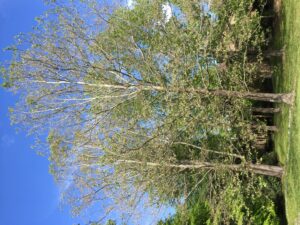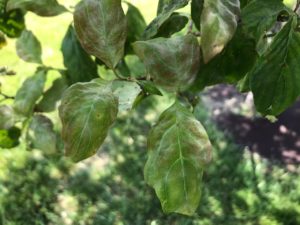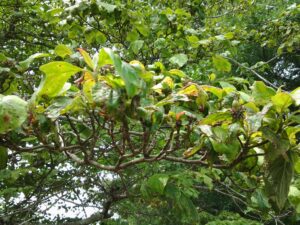Pest Alert – Anthracnose on Maple and Sycamore
go.ncsu.edu/readext?937520
en Español / em Português
El inglés es el idioma de control de esta página. En la medida en que haya algún conflicto entre la traducción al inglés y la traducción, el inglés prevalece.
Al hacer clic en el enlace de traducción se activa un servicio de traducción gratuito para convertir la página al español. Al igual que con cualquier traducción por Internet, la conversión no es sensible al contexto y puede que no traduzca el texto en su significado original. NC State Extension no garantiza la exactitud del texto traducido. Por favor, tenga en cuenta que algunas aplicaciones y/o servicios pueden no funcionar como se espera cuando se traducen.
Português
Inglês é o idioma de controle desta página. Na medida que haja algum conflito entre o texto original em Inglês e a tradução, o Inglês prevalece.
Ao clicar no link de tradução, um serviço gratuito de tradução será ativado para converter a página para o Português. Como em qualquer tradução pela internet, a conversão não é sensivel ao contexto e pode não ocorrer a tradução para o significado orginal. O serviço de Extensão da Carolina do Norte (NC State Extension) não garante a exatidão do texto traduzido. Por favor, observe que algumas funções ou serviços podem não funcionar como esperado após a tradução.
English
English is the controlling language of this page. To the extent there is any conflict between the English text and the translation, English controls.
Clicking on the translation link activates a free translation service to convert the page to Spanish. As with any Internet translation, the conversion is not context-sensitive and may not translate the text to its original meaning. NC State Extension does not guarantee the accuracy of the translated text. Please note that some applications and/or services may not function as expected when translated.
Collapse ▲There are many problems that can affect leaves of our native trees. Diseases such as anthracnose, powdery mildew, phyllosticta and bacterial scorch can infect tree leaves during favorable weather conditions. Lately, I have been getting lots of calls about browning leaves on maples and sycamores.

Anthracnose on sycamore can defoliate trees in years of high severity. However, this rarely harms the tree.
Anthracnose leaf spot is a broad term used for a variety of fungal diseases that infect hardwoods such as maple, sycamore, oak, ash, and dogwood. Anthracnose (caused by Aureobasidium apocryuptum, Discula campestris, Colletotrichum gleosporoides, and other fungal pathogens) causes lesions on leaves, twigs, and fruit. Lesions often have distinct margins and are located along leaf veins, where water may linger and promote fungal growth. They appear in the spring and expand as the leaf grows into the summer.

Powdery mildew on trees causes leaves to curl then turn purple. Eventually they get covered in white fungal mycelium resembling powder as in the case of this dogwood.
The symptoms of anthracnose can vary with the species of fungus and host. Anthracnose is primarily an aesthetic concern and does not impact established trees. No pesticides necessary! However, in rare cases, large infections and disease presence may kill young shoots and cause dieback. The most important management strategy is sanitation: removing infected fallen leaves can help prevent the spread of spores onto next year’s foliage.

Dogwood spot anthracnose can make dogwoods look terrible in the summer but really doesn’t harm the plant.
References: NC State Extension publication Common Diseases of Maples





